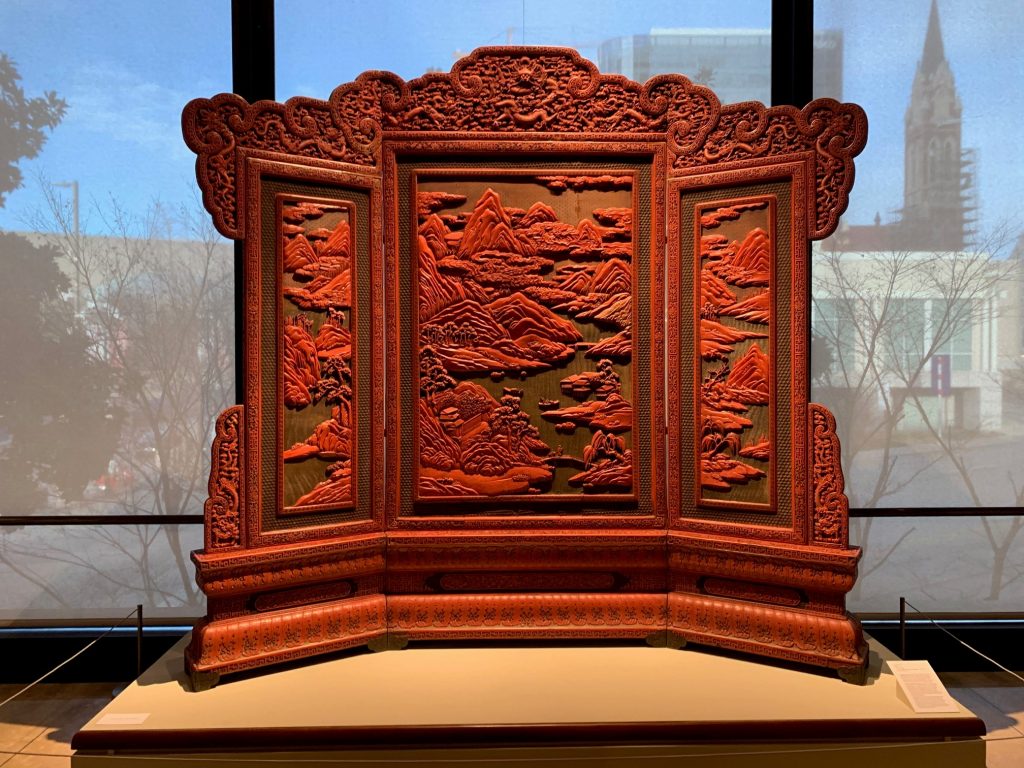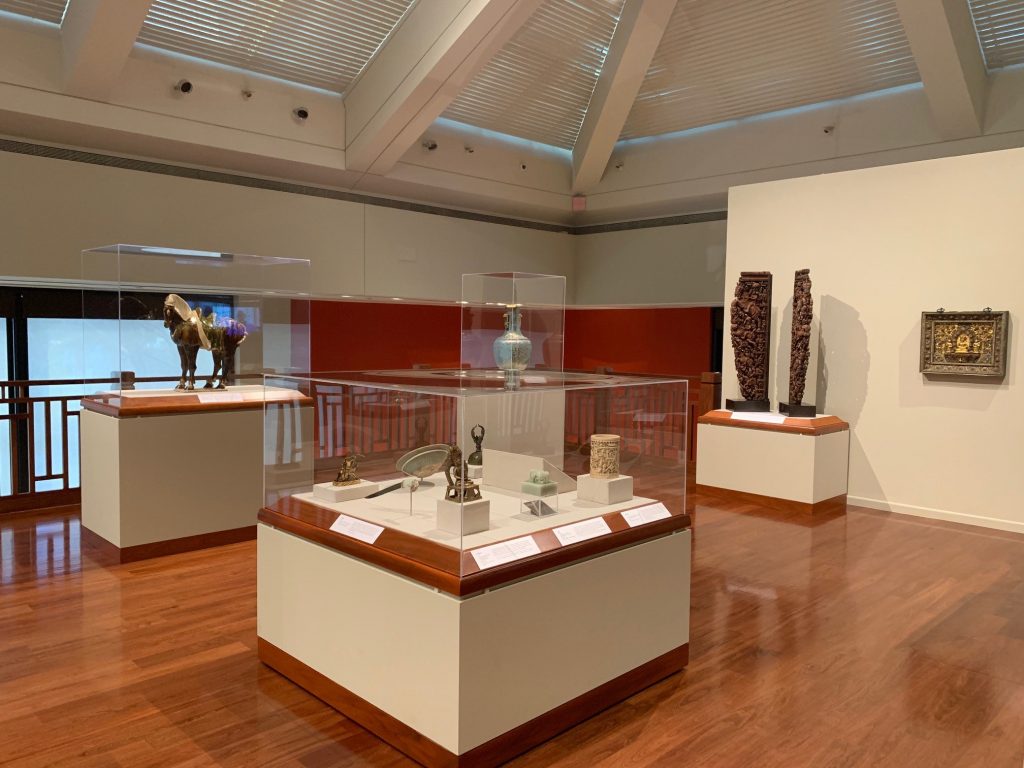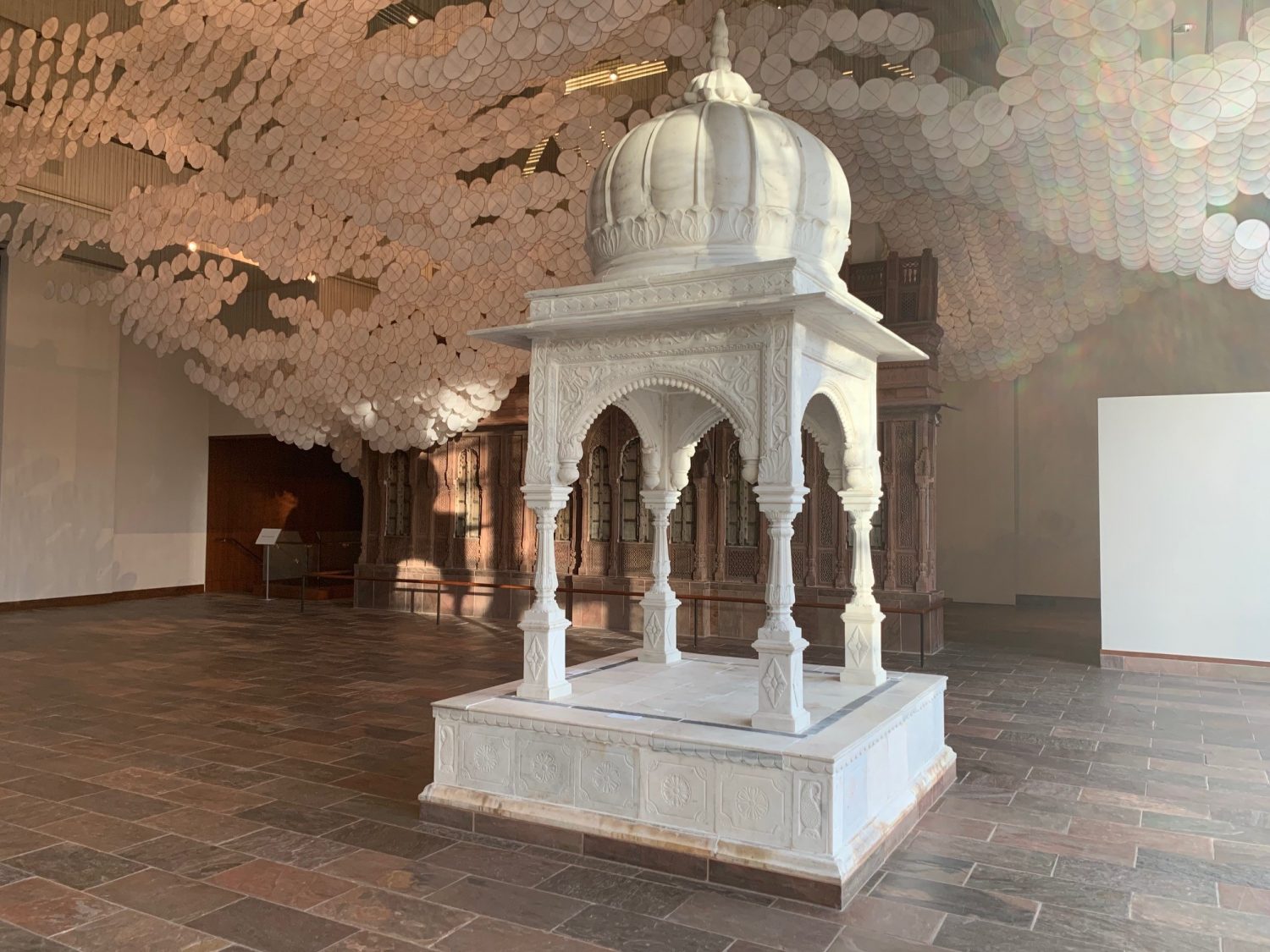Editor’s Note: This article was originally published online on Jan. 24. It has since been updated to include quotes from Sarah Kozlowski, the director of the Edith O’Donnell Institute of Art History.
UTD acquired the Crow Collection of Asian Art in its entirety, university officials announced Thursday afternoon. In addition to the pieces currently housed in the Arts District downtown, UTD received a sum of $23 million from the foundation to maintain and house the remainder of the collection in a second, dedicated museum to be built on campus.
The pieces currently displayed downtown represent about a third of the total collection. The acquisition comes on the heels of the donation of the Barrett collection of Swiss art in October.
“(Back in the summer) having a museum on campus was a non-starter because we didn’t have any money,” Executive Vice President Hobson Wildenthal said. “We were fundraising to build the Barrett museum of Swiss art, and we had to do that first.”

By late summer, the Crow Family Foundation, which has operated the museum since its founding, offered UTD an additional “bridge” grant of $23 million.
“The Crow family decided that they could free up money to give to UTD to build a second museum on campus,” Wildenthal said. “At that point, things took off.”
About $20 million of that grant will be used to construct a standalone building on campus to house the art, Amy Hofland, executive director of the Crow Museum, said. She said the UTD museum is set to open within the next three to five years.
“We’ve already got great science, engineering and management (programs),” Wildenthal said. “But up until now, we’ve been relatively undistinguished in the arts.”
Hofland said the merger fulfilled multiple needs for all stakeholders.
“It was really looking at shared needs and complementary resources,” Hofland said. “The things that Crow needed, UTD had. And UTD wanted a museum.”
The museum itself had outgrown its downtown facilities, Hofland said. Currently, only a third of the collection can be displayed at a given time, and there is no space for educational and cultural programming.
Hofland said in talks with Asian American leaders, it became clear that the downtown museum was not always accessible to those whose heritage it hoped to celebrate.
“(Richardson) is a major population center for Asian Americans,” Hofland said. “We need to be responsive to the cultural life of the region, not just the city.”
Another concern was financial sustainability.

“The Crow family has donated tens of millions of dollars to the museum, and they certainly could continue to do that,” Hofland said. “But for a museum to thrive, it has to be held by the public trust. It has to leave the nest.”
Discussions to move the collection and merge operations formally began in December 2017, spearheaded by Richard Brettell, a UTD professor.
“I gave a talk in November about the future of the Crow Museum, and Dr. Brettell heard the talk,” Hofland said. “(He) had the idea that the Crow Collection…could be a part of a new strategy to bring arts and culture to the campus.”
Wildenthal said Brettell was instrumental in securing the most recent donation. Brettell founded the Edith O’Donnell Institute of Art History, which will oversee the Crow Collection. He has also spearheaded efforts to secure the Barrett collection of Swiss art and the Davidow collection of contemporary art, which is currently housed in JSOM.

Brettell’s connection with the Crow donation stretches back to 1997, when he advocated for the creation of a public museum to showcase the Crow family’s extensive collection of Asian art. Less than a year later, the museum opened its doors on Flora Street.
“He’s the kind of person who sees things before they materialize,” Hofland said. “He brought us all together…and didn’t think about the impossibilities of it all.”
Hofland said in making the decision, stakeholders had taken note of how quickly UTD has grown in the last few years.
Dennis Kratz, the dean of the School of Arts and Humanities, said he hoped that with the Barrett and Crow donations, the School of Arts and Humanities will get more attention.
“It’s a great moment for the university and the School (of Arts and Humanities),” Kratz said. “It’s part of our goal to balance UTD, to get us the same sort of reputation for the humanities and the liberal arts that we have for science.”
Sarah Kozlowski, director of the Edith O’Donnell Institute of Art History, said she hopes the recent donations will open new faculty positions in the O’Donnell Institute and in the School of Arts and Humanities.
The O’Donnell Institute does not currently have a scholar of Asian art — a shortcoming they will soon be remedying, Kozlowski said.
“We will be of course partnering with the wonderful Jacqueline Chao, who’s (the) curator at the Crow and a scholar of Chinese art,” Kozlowski said. “But I think it will be important to think about more faculty hires in the field of Asian art.”

Kozlowski said the newly acquired Crow collection would fulfill one of the major initiatives of the O’Donnell Institute.
“I’m especially excited to partner with the Crow to pursue object-led research and teaching,” Kozlowski said. “The individual objects (are) … points of departure for exploration of global art history.”
Hofland said the Crow’s current curatorial staff will continue to oversee the collection even after the transition to UTD but is excited to work with the School of Arts and Humanities to add new programming that serves campus needs.
In addition to the new museum, UTD will continue to operate the Arts District facility. Wildenthal said the museum’s current location on Flora Street allows UTD to have an increased presence downtown.
“We have the UTD room at the Dallas Museum of Art … but that’s only one room,” Wildenthal said. “(Now) we have a footprint downtown by the DMA and the Nasher and the Dallas Symphony and the Dallas Opera. UTD will be right down there with the major cultural players of Dallas.”
Wildenthal said with the Crow and Barrett acquisitions, UTD continues to make a name for itself as a capable recipient of donations from art collectors. He also hinted at a future, separate museum to join the Crow and Barrett museums on campus.
“We hope both collections will be merely the nucleus of an ever-growing (group of) museums,” Wildenthal said. “Many private collectors … when their generations turn over, want to do something with (their art collections) and they’ll have a natural home (at UTD) so that these collections can grow.”


